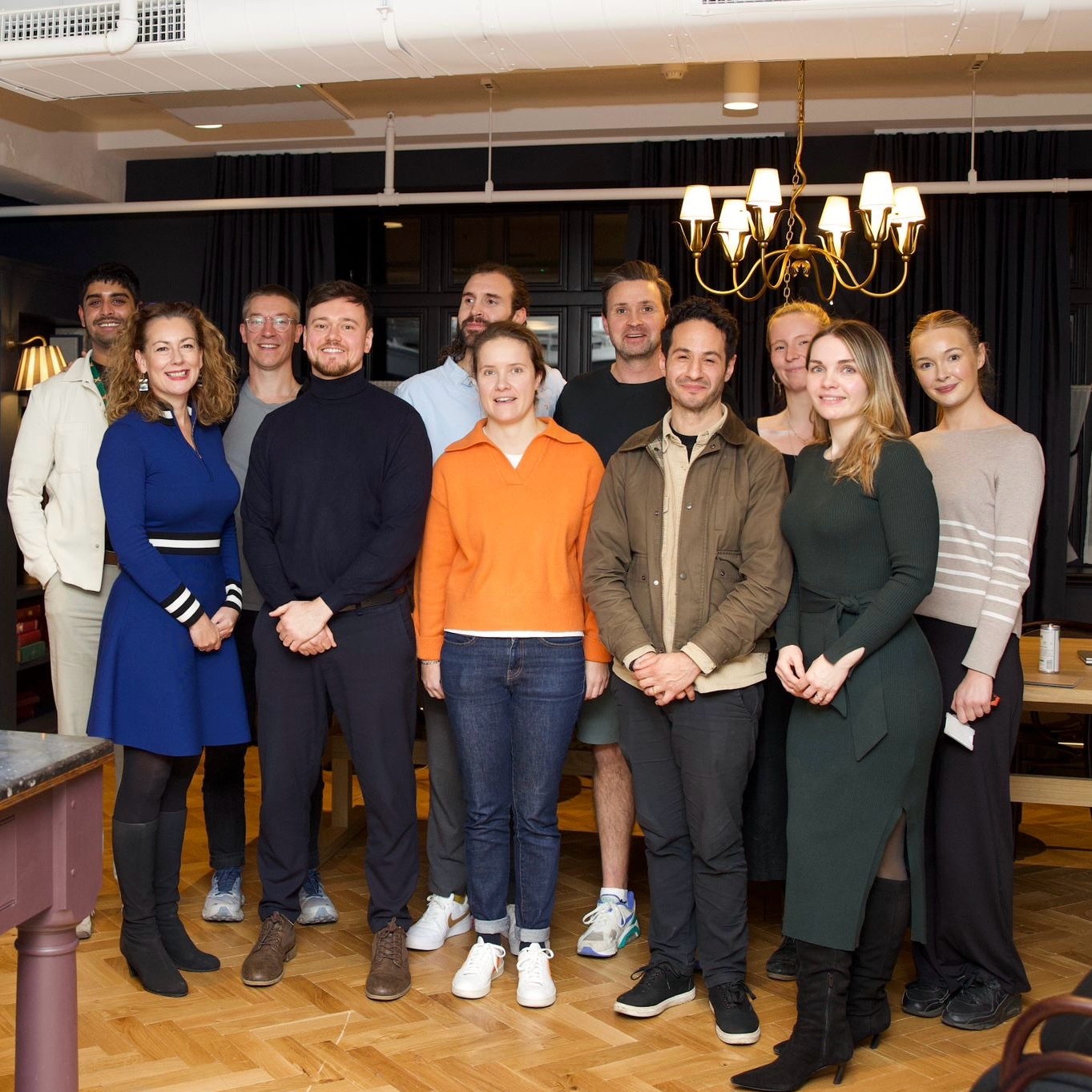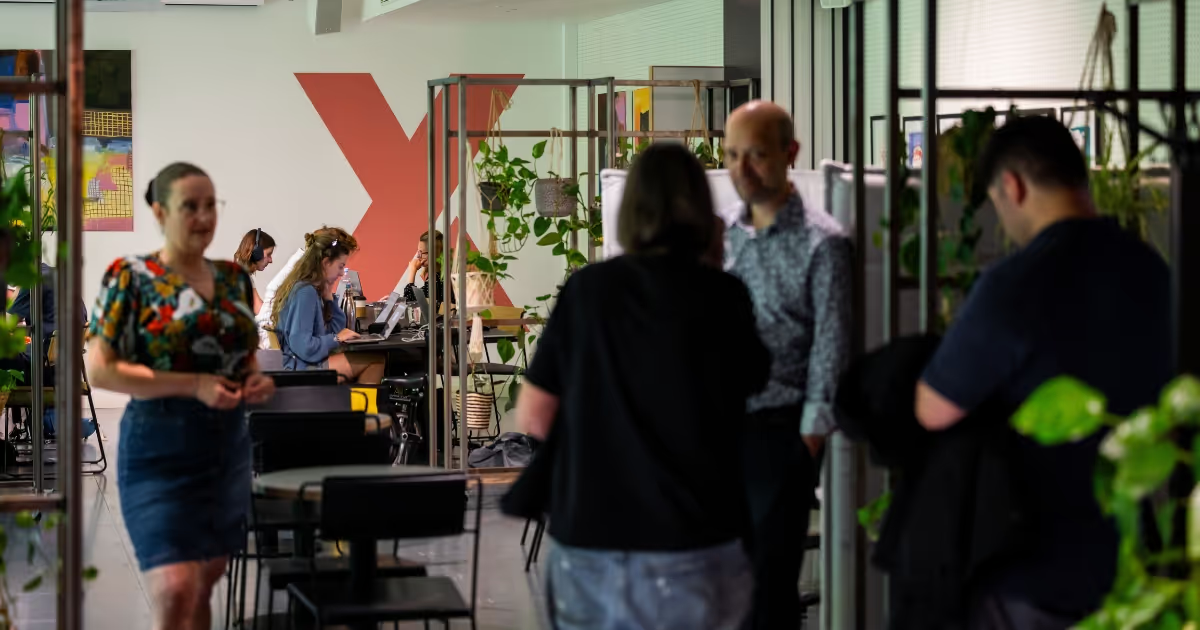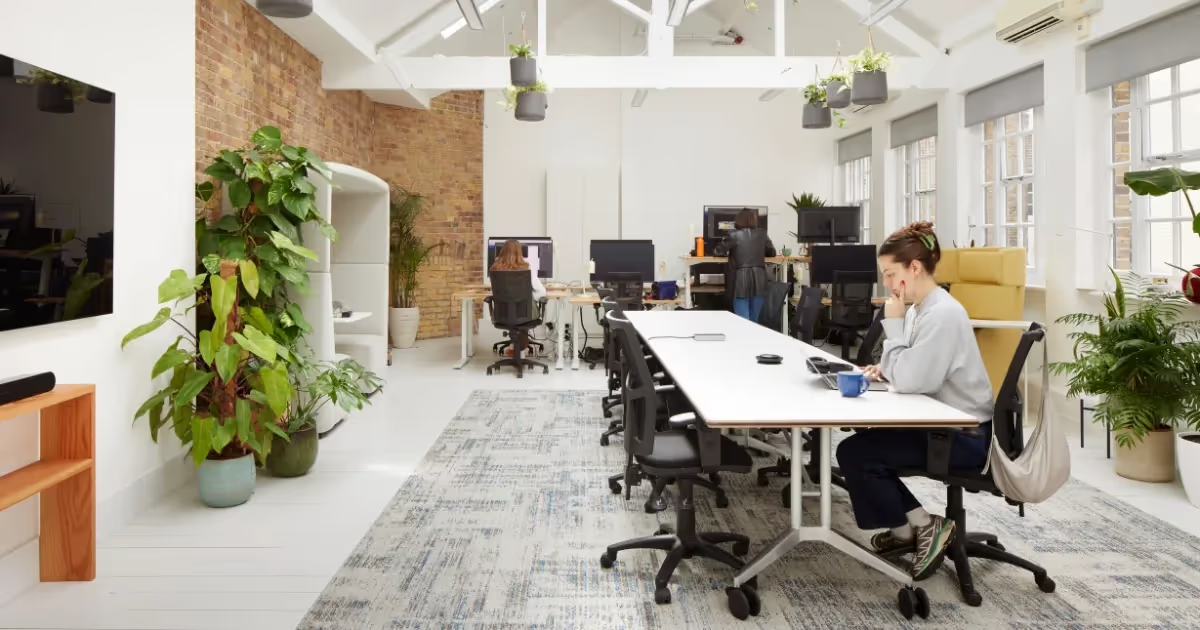Businesses of all sizes are questioning and evaluating their environmental impact today more than ever. It’s a common misconception that going green is an expensive process, in fact the reverse is usually true. The B Corp movement demonstrates that eco-conscious businesses are often more profitable in the long-term, because of their aligned and purpose-driven strategies, and lower overheads
Businesses of all sizes are questioning and evaluating their environmental impact today more than ever. It’s a common misconception that going green is an expensive process, in fact the reverse is usually true. The B Corp movement demonstrates that eco-conscious businesses are often more profitable in the long-term, because of their aligned and purpose-driven strategies, and lower overheads.
{{divider}}
Here are 5 ways that any business can become more regenerative today:
{{divider}}
1. Go Paperless
{{divider}}
Going paperless is a win-win for most companies, with the process often facilitating organisation, book-keeping and accessibility in the process. A paperless age may not be far off the horizon, and going digital is becoming progressively easier every day, with an increasing number of applications replacing the need for paper.
{{divider}}
Almost all banks now encourage paperless options, and the virtual Macbook sticky has come to replace the iconic post-it. Using task organising platforms like Jira and Trello let you to have an online Kanban board with the possibility to share it with your employees, enabling better communication and an easy way to adjust the tasks.
{{divider}}
Gone are the days of being sent documents which you would have to print, sign and scan. The process is now easier than ever with the help of magical digital signatures and cloud-based tools. Google Docs allows groups to collaborate in real-time, sharing meeting notes and scribbling in bits of feedback, without having to erase and rewrite ideas.
{{divider}}
Using cloud services instead of paper saves you office space and money, and fewer cities do this better than Dubai. As many as six separate Dubai government sectors have cooperated and managed to cut down on 27 million sheets of paper a day. All it took was moving their operations to a digital space.
{{divider}}
2. Become Plastic-Free
{{divider}}
Plastic pollution is one of the most pressing environmental issues that we face today, and with so many alternatives now available, there’s really no excuse. Every year, about 8 million tons of plastic waste escapes into the oceans from coastal nations. At the same time, our landfills are getting bigger and bigger, storing all the waste and polluting the soil around it.
{{divider}}
Some of the swaps your office or team could be making include reusable cutlery over disposable options, biodegradable bin liners (instead of petroleum-based options), sustainable snack suppliers and fountains instead of water coolers. In general, better materials to opt for include aluminium, wood, and glass - which can ideally be reused and upcycled, or recycled into something new.
{{divider}}
When thinking about how we can reduce, reuse and recycle, the most important element of the circular economy is to focus on reduction. Currently, just reusing and recycling is not enough to positively impact many of the issues that the planet is facing. Overproduction and overconsumption are a major flaw of the current capitalist model, which is shifting towards a more regenerative and less linear approach, under purpose-driven enterprise.
{{divider}}
3. Leave The Car At Home
{{divider}}
While it may not be realistic to expect everyone to completely trade their cars for bikes, scooters or mopeds, reducing use and only driving when absolutely necessary could positively impact society in more ways than one. As well as reducing CO2 and gas emissions, it also reduces noise pollution (how quiet was the city during lockdown?) which can impact sleep and wellbeing.
{{divider}}
While using public transport is the most common eco-friendly commuting solution, it isn't the only one. Most flexible workspaces now provide bicycle storage racks, and services such as Uber have already introduced concepts such as carpooling. So if you must drive, it helps to get to know your coworkers, and save money by sharing a ride in the process.
{{divider}}

4. Reduce Energy Consumption
{{divider}}
Flexible workspace providers such as x+why have already subscribed to the office of the future, including the landing of the smart office. By leveraging technology to solve some of the very problems to which it contributes, smart offices are able to detect occupancy rates, and reduce energy consumption accordingly.
{{divider}}
On an individual level, the easiest way to do this is to become more conscious about our use. This means taking even just simple steps such as unplugging devices when they are not in use, changing lightbulbs and switching them from traditional incandescent bulbs to LEDs, which are much more energy-efficient, or leaving signs to remind people to turn off the lights.
{{divider}}
We can also impact energy consumption through our diets, for example by reducing our red meat intake to just a few times a month, instead of on a weekly basis. As well as creating savings in our wallets, this could also be good for our waistlines, especially when replaced with more nutritious and fibre-full plant-based meals.
{{divider}}
5. Green Partnerships
{{divider}}
In our increasingly interconnected world, its important to evaluate our impact, all along the value chain. This means leveraging partnerships that are also aligned with your company mission and goals. This is what makes networks such as the B Corporation so popular, with all companies voluntarily holding each-other accountable.
{{divider}}
Start-ups often have a head start when it comes to going green, as its much easier to in-still such a mindset and the associated processes from the beginning, than it is for a large organisation to undergo a culture-change. However, for businesses of all sizes, the changes often result in large savings on overheads, and positive impacts on wellbeing, without any negative effects on the quality of the product or service.
{{divider}}
Taking these first 5 steps can in the long-term, make a big difference in the move towards more decentralised, circular and regenerative economies based on sharing, over the traditional linear approach.
{{divider}}





.png)
.avif)


.avif)


.avif)
.avif)



